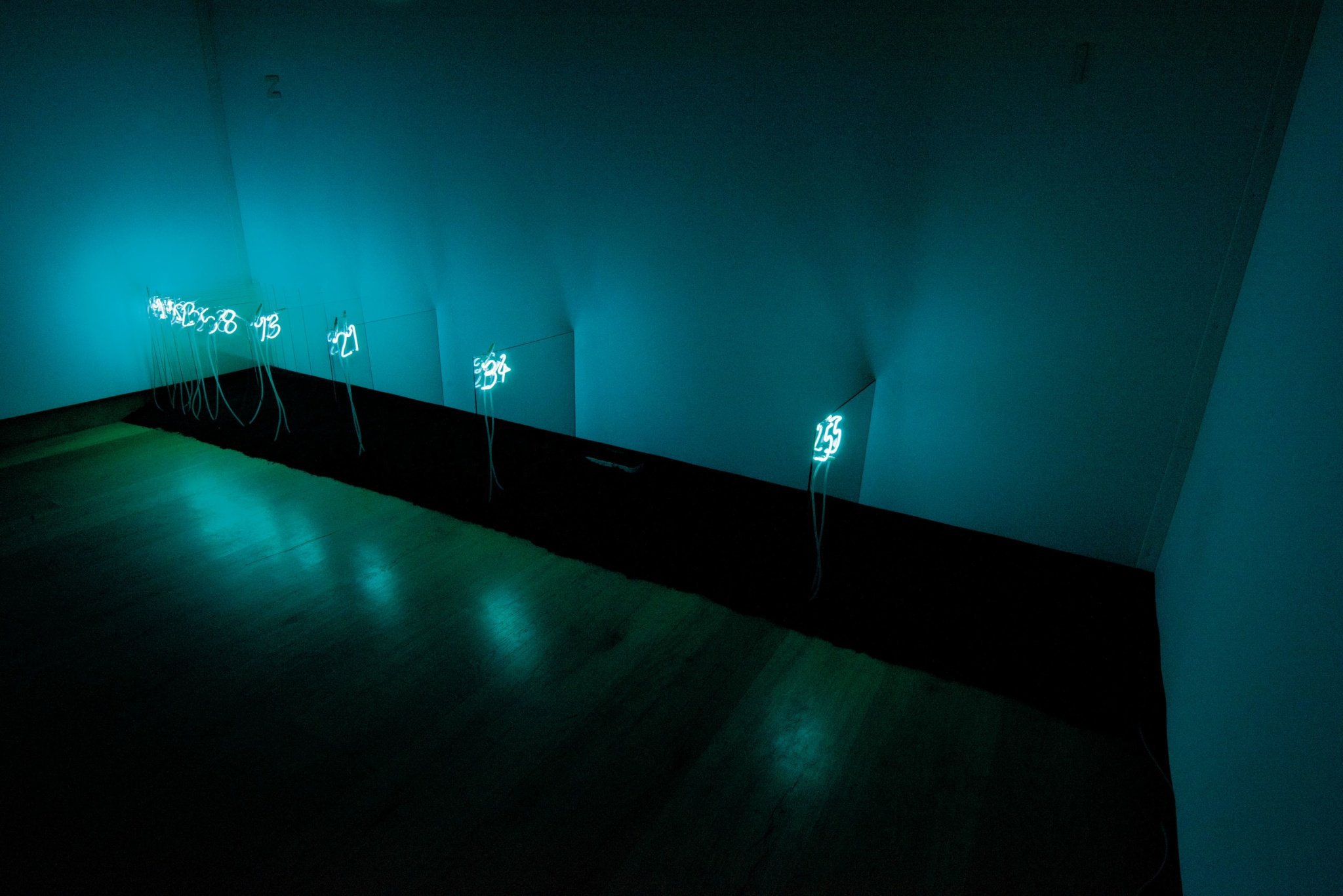
A resurgence of interest Arte Povera has emerged in the art world at large recently, and more specifically in the city of Paris, where several exhibitions dedicated to the movement have debuted. Joining this celebration of the Italian mode of artmaking is Tornabuoni Art, which is presenting the group exhibition “Arte Povera: Charting a Revolution,” featuring historic works by some of the movement’s pioneers and most influential figures, including Alighiero Boetti, Pier Paolo Pistoletto, Luciano Fabro, Jannis Kounellis, Mario Merz, Giulio Paolini, Pino Pascali, Giuseppe Penone, and Michelangelo Pistoletto. On view through January 12, 2024, while the heart of this meticulously curated show is at the gallery’s Avenue Matignon space, it also extends to the gallery’s booth at Art Basel Paris.
Alighiero Boetti, Mimetico (1967). Courtesy of Tornabuoni Art.
The term Arte Povera was first coined in 1967 in Flash Art by art critic Germano Celant, who identified artists working in Turin that were similarly turning away from codified traditions of artmaking as well as the approval of institutions, and instead forging their own path. The rebellious nature of their work and practice lent to a sense of camaraderie, and while the artists themselves never officially or formally committed to being a group, they continued to exhibit extensively alongside each other for many years.
Jannia Kounellis, Untitled (1961). Courtesy of Tornabuoni Art.
Instead of providing a straightforward historical overview of the movement or its associated artists, “Arte Povera: Charting a Revolution” leverages a concise selection of important works by key players to alchemize the radical, revolutionary essence of the time and place the works were made, creating a visceral experience for visitors. A work from “Alfabeto di Kounellis,” one of Jannis Kounellis’ most acclaimed series, a neon installation by Mario Merz, and abstractions by Alighiero Boetti, the group exhibition exposes the heart of Arte Povera in a manner not possible if focused on any one artist individually.
Giulio Paolini, Casa di Lucrezio (1981). Courtesy of Tornabuoni Art.
But this isn’t to say that valuable insight into each artist’s practice is not also on view. By juxtaposing these contemporaries early work, the nuances of their practice’s evolution are highlighted. Excerpted from the show’s accompanying catalogue, Director of the Alighiero Boetti Archive comments, “If we look closely at the works from the 1960s, we see that the fundamental concepts of Boetti’s practice are already present.” Ultimately, “Arte Povera: Charting a Revolution” brings the radical spirit of the artists shown to the 21st century, highlighting their enduring legacy and influence.
“Arte Povera: Charting a Revolution” is on view at Tornabuoni Art, Paris, through January 12, 2025.